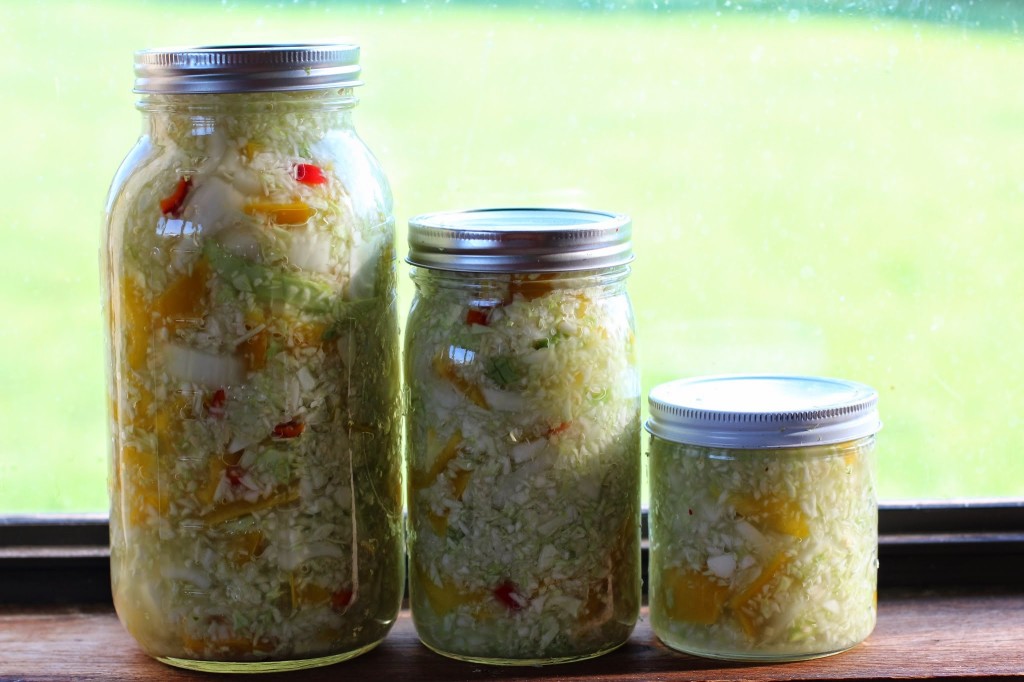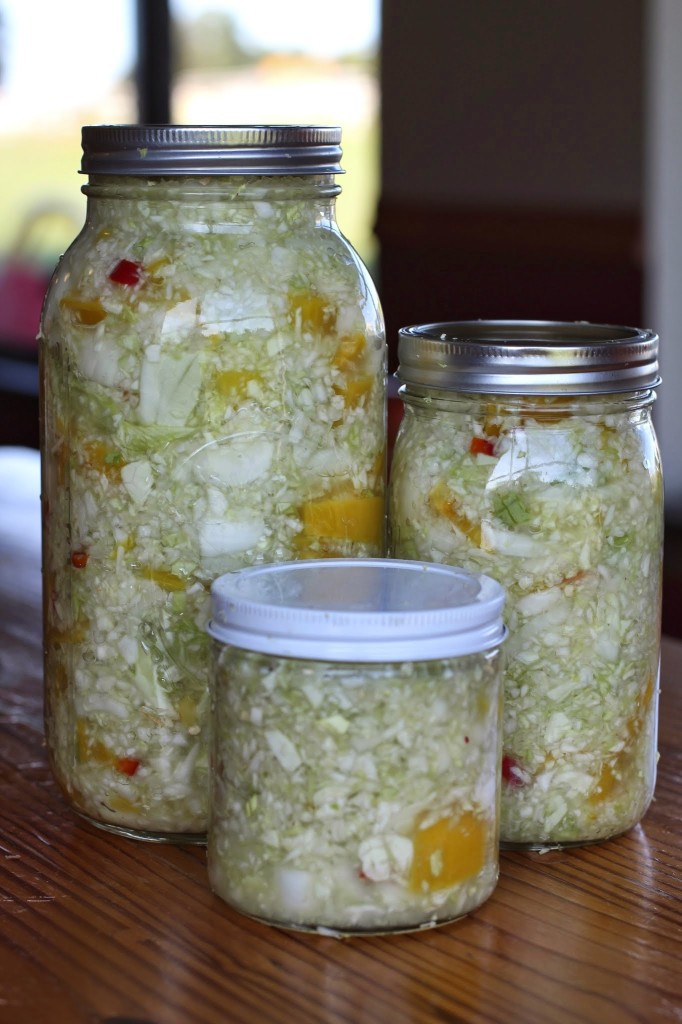Homemade Fermented Veggies:
This Homemade Fermented Veggies recipe is by my friend Kelcie Yeo. Fermented veggies are one of the best ways to support overall digestion.
If you enjoy recipes like this, you may be interested in my advanced nutrition and recipe book the Keto Metabolic Breakthrough.
Fermented Veggies
Prep
Total
Yield 1/2 Gallon Fermented Veggies
Ingredients:
- 1 head of cabbage
- 3 bell peppers
- 1 clove of garlic
- ½ red onion
- 2 tbsp. of pink salt
- 16 oz. cultured whey (or 4 oz. of apple cider vinegar)
- 16 oz. spring (or filtered water)
Instructions:
Step #1: Gather all the ingredients
Step #2: Chop bell peppers and onions, shred cabbage and mince garlic.
Step #3: Rub your salt into the vegetables and let them sit in a large bowl for 6 hours to help draw out the juices.
Step #4: Pack the vegetables and their juices into mason jar and pour cultured whey or apple cider vinegar over the top. If the vegetables are not completely submerged add water.
Step #5: Screw on a plastic lid and let it sit for 24 hours on the counter. Every 12 hours “burp” your jar for one week. After the first week, let it sit for another 2-3 weeks always making sure liquid is covering your vegetables.
If you are using apple cider vinegar. Make up the remaining fluid with water. So 4 oz. of apple cider vinegar and 24oz of water would be the equivalent.
Notes
***The nutrition info for this recipe is based on the linked ingredients above**
Courses Side Dish
Nutrition Facts
Serving Size 1/2 cup
Amount Per Serving | ||
|---|---|---|
Calories 35 | ||
% Daily Value | ||
Total Carbohydrates 7.5 g | 3% | |
Dietary Fiber 3 g | 12% | |
Sugars 4 g | ||
Protein 1.5 g | 3% | |
* Percent Daily Values are based on a 2,000 calorie diet. Your daily values may be higher or lower depending on your calorie needs.
Dr Jockers Comments:
This is a great recipe that can be altered depending upon what vegetables you want to use. A vegetable blend is great because each veggie has its own unique characteristics and nutrients. When fermented these nutrients synergize and get to their peak level of nutritional potential.
This is an amazing way of adding highly bioavailable nutrition, enzymes and probiotics for optimal digestion. I personally consume small amounts of fermented veggies almost every day. It improves my bodies ability to digest and assimilate the nutrients in all the rest of the foods I am consuming throughout the day. Give it a shot yourself.






How long will veggies last. And i would think you wouls store in refrigerator?
Hey Cheryl, yes you would put them in the fridge after the fermentation is finished. How long they last will depend on how well they are made. They can mold if not made properly so just be keen on any unexplained growths or smells.
Where do I get this cultured whey
From a local farmer, but if you can’t get it, just use the ACV.
I don’t use culture or ACV, just salt and brine to top up. They ferment at same rate as if culture is used and I put them in the fridge to store. As long as the verges are kept under the brine they last for months (if they’re not eaten way before that).